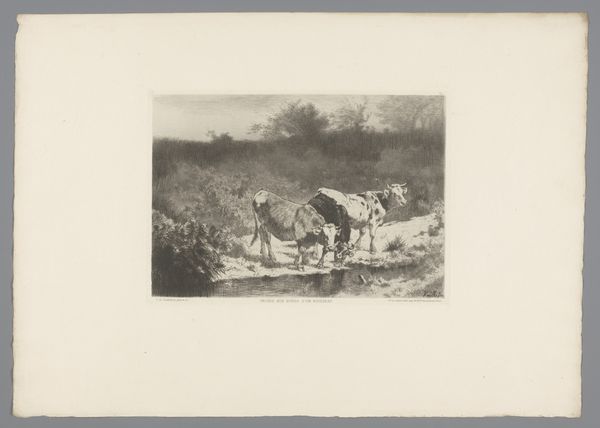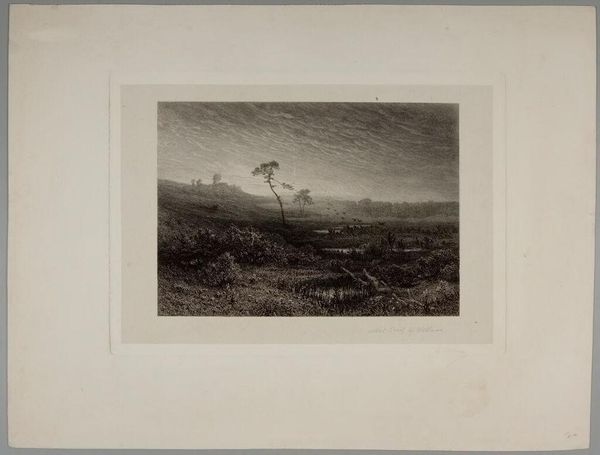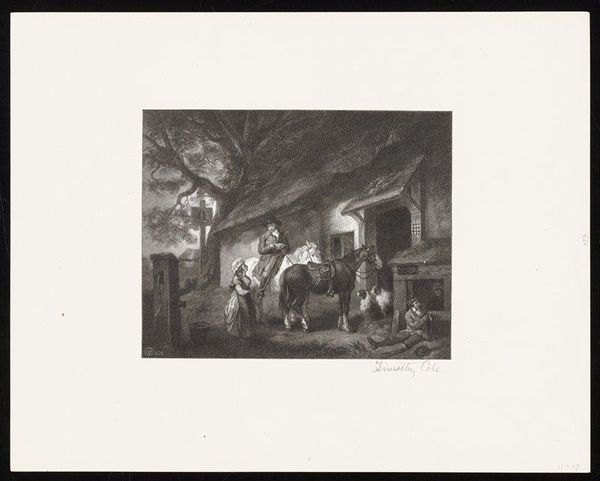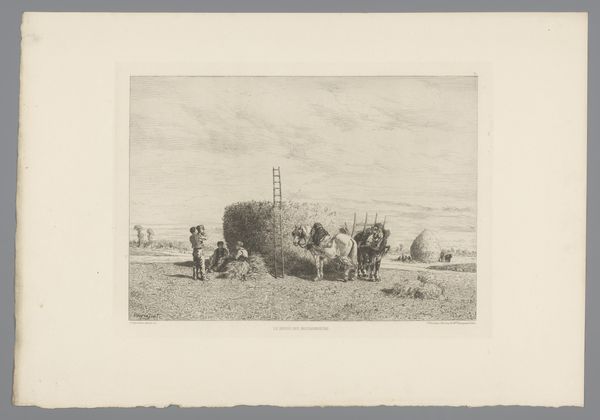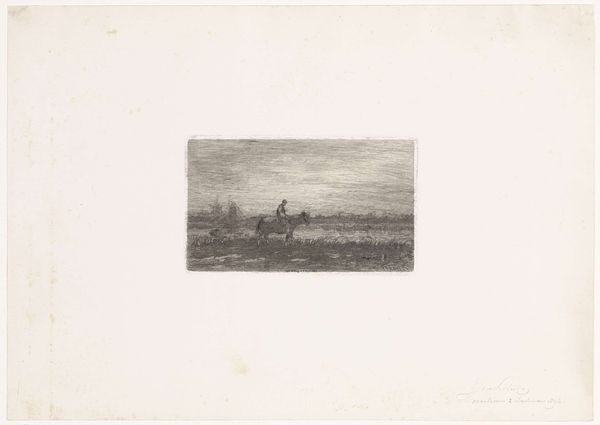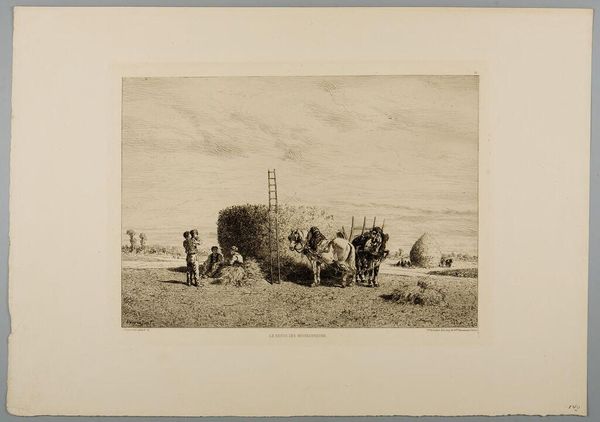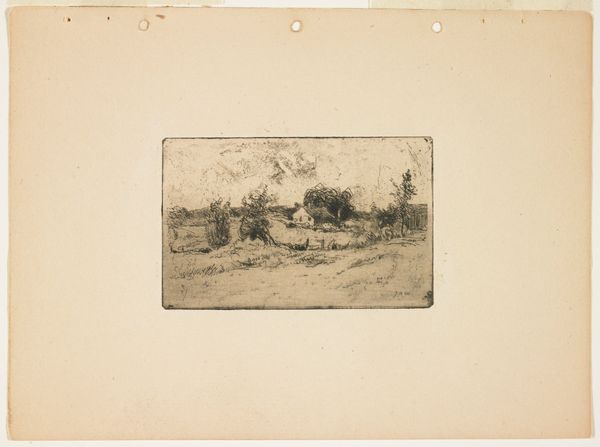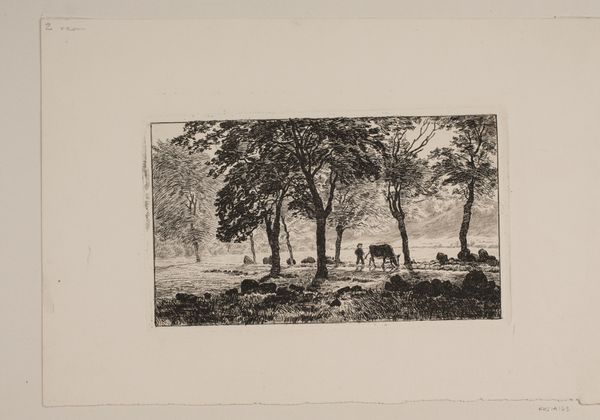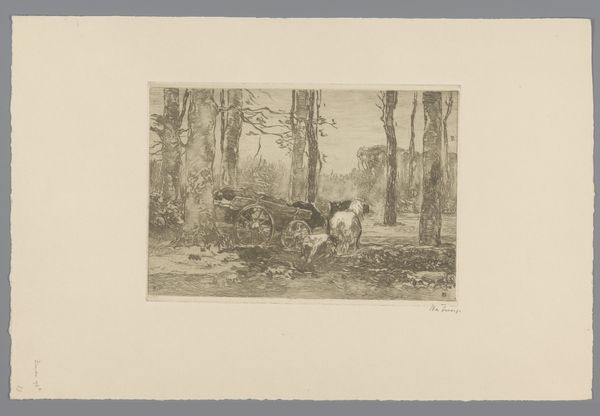
Dimensions: 5 1/8 x 8 1/8 in. (13.02 x 20.64 cm) (image)9 1/2 x 12 in. (24.13 x 30.48 cm) (sheet)
Copyright: No Copyright - United States
Editor: Timothy Cole's "A Frosty Morning," created in 1901, is a print, likely a woodcut or wood-engraving, now residing at the Minneapolis Institute of Art. I’m struck by the scene's quiet stillness; it’s as if the landscape is holding its breath against the cold. What are your thoughts on how this artwork reflects its time? Curator: Well, seeing this work through a historical lens, I immediately consider the role of industrialization at the turn of the century. Notice the subtle presence of what appears to be a factory or mill in the background. Do you see how its presence, almost ghost-like, contrasts with the rural foreground? Editor: I do now. The factory's smokestack barely pierces through the horizon, so different from the figures traveling by animal-drawn cart. Curator: Exactly! Cole captures the tension between agrarian life and encroaching industrialization. Consider also the audience for such prints. Reproductions like these made art accessible to a burgeoning middle class. What socio-political narrative might that suggest about art consumption at the time? Editor: I hadn’t thought of it that way, but that makes sense. Reproductions democratized art to some extent, making it less exclusive to the wealthy elite. It could imply a shift in who gets to interpret and engage with art. Curator: Precisely. And notice how the artist used grayscale, which heightens a sense of seriousness, connecting this to realism more broadly, giving visibility to subjects that weren't commonly displayed, like those figures by the wagon in "A Frosty Morning." Editor: I hadn't considered those sociopolitical aspects tied to artistic movements! Thanks for opening my eyes. Curator: It’s always rewarding to connect the artwork to the world it came from.
Comments
No comments
Be the first to comment and join the conversation on the ultimate creative platform.
